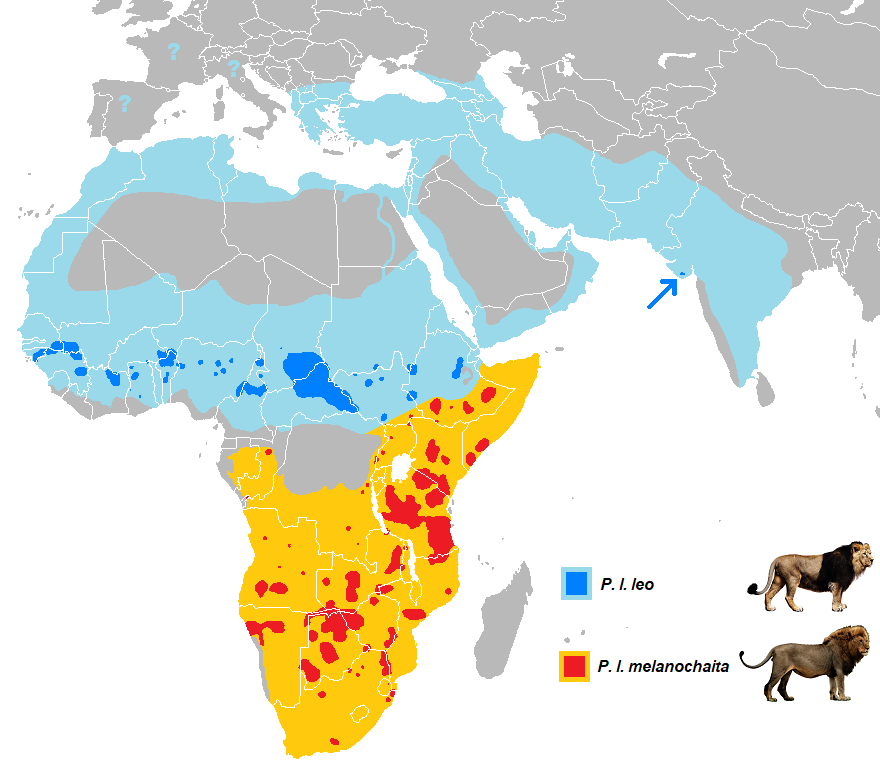The historic and present distribution of lions (Panthera leo) spans across various regions of Africa and a small pocket in western India. Historically, lions were once widespread throughout Africa, inhabiting diverse ecosystems ranging from savannas and grasslands to woodlands and semi-desert areas. They were also found in parts of the Middle East, including the Arabian Peninsula and some regions of southwestern Asia.
Over the course of the 20th century, the lion population experienced a significant decline due to various factors such as habitat loss, human-wildlife conflict, and poaching. As a result, their historic range has contracted, and lions are now primarily concentrated in sub-Saharan Africa.
Presently, lions are found in fragmented populations across several African countries, with some of the notable strongholds being in countries like Tanzania, Kenya, Botswana, South Africa, and Zimbabwe. Conservation efforts, including the establishment of protected areas and initiatives to mitigate human-wildlife conflict, aim to ensure the survival and well-being of these majestic big cats.
In India, lions historically inhabited a much larger area, but their range has significantly diminished. As of the present day, the only population of wild Asiatic lions exists in the Gir Forest National Park and surrounding areas in the state of Gujarat. Conservation efforts in India have focused on protecting this remaining population and exploring possibilities for reintroduction in other suitable habitats.
Currently, two subspecies of lions are distinguished - Panthera leo leo and Panthera leo melanochaita.
The lion subspecies Panthera leo leo inhabits West Africa, northern Central Africa, and India. Within West and Central Africa, it is confined to fragmented and isolated populations experiencing a decline in numbers. Commonly known as the northern lion, this subspecies faces challenges related to habitat fragmentation and decreasing population trends in its designated regions.
The lion subspecies Panthera leo melanochaita is native to Southern and East Africa. Within this region, lion populations have become regionally extinct in Lesotho, Djibouti, and Eritrea. The remaining populations face threats such as habitat loss, diminishing prey bases, retaliatory killing by local communities due to livestock losses, and, in several countries, the additional pressure of trophy hunting.
The lion subspecies Panthera leo leo is regionally extinct in North Africa, southern Europe, and West Asia. The exclusive lion population in Asia is confined to the vicinity of Gir National Park in India. In West Africa, the lion population is geographically isolated, with fewer than 250 mature individuals, earning it a critical endangered status on the IUCN Red List.
According to Lion Conservation Units (LCU), the current population estimates for Panthera leo melanochaita range from 33,967 to 32,000 individuals.
To learn more about lions and other big cats have a look at these recommended books:


This post may contain affiliate links. As an Amazon Associate, I earn from qualifying purchases.
Comments
Post a Comment